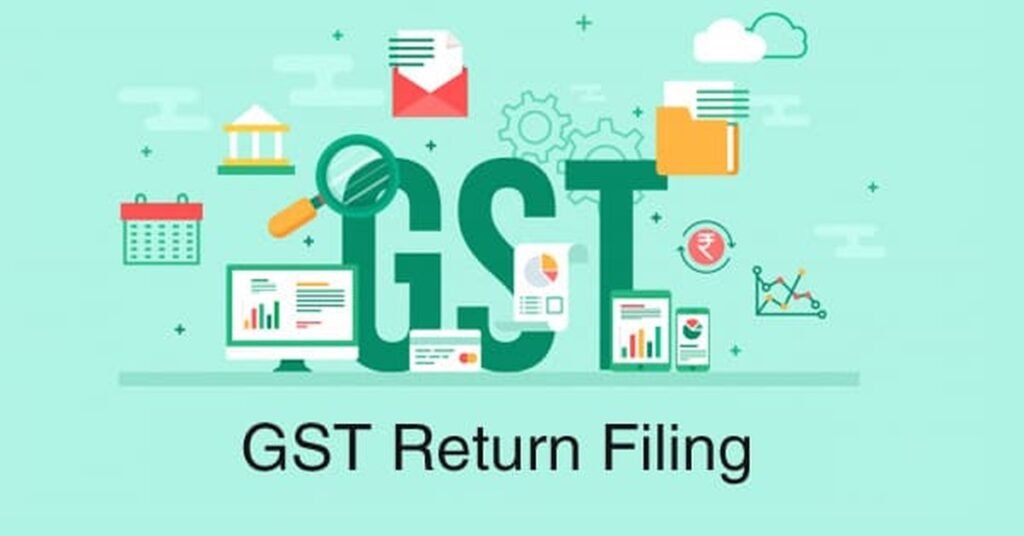GSTIN Return Filing
Businesses registered under GST are required to submit their GST returns either on a monthly or quarterly basis, in addition to an annual return, depending on their business type. The filing of GSTR is conducted electronically through the GST portal.
- No extra fees
- We promise the best prices around.
- Easy and fast
- Our experts are here to help you for as long as you need.
Get Expert Consultation
Understanding GST Returns
A GST return is a crucial document detailing a GST-registered taxpayer’s income, expenses, sales, and purchases, submitted to tax authorities. This information is vital for calculating the net tax liability.
In the realm of GST, registered dealers must file returns covering purchases, sales, output GST (on sales), and input tax credit (GST paid on purchases).
For seamless GST filings, consider utilizing Clear GST software. This user-friendly tool facilitates data import from various ERP systems like Tally, Busy, and custom Excel. Tally users can also leverage the desktop app for direct data upload and filing. Streamline your GST processes with Clear GST!

Who Needs to Submit GST Returns
Under the GST system, businesses with an annual turnover exceeding Rs. 5 crore (excluding those under the QRMP scheme) must file two monthly returns and one annual return, making a total of 25 returns each year. For businesses with a turnover of up to Rs. 5 crore, they can choose the QRMP scheme. Under this scheme, they need to file a total of 9 returns annually, including 4 GSTR-1 and GSTR-3B returns each, along with an annual return. It’s important to note that despite filing returns quarterly, QRMP participants are required to pay taxes on a monthly basis. Certain special cases, like composition dealers, involve filing 5 returns per year, which include 4 statement-cum-challans in CMP-08 and 1 annual return GSTR-4.
How many returns are there under GST?
There are 13 returns under GST. They are the GSTR-1, GSTR-3B, GSTR-4, GSTR-5, GSTR-5A, GSTR-6, GSTR-7, GSTR-8, GSTR-9, GSTR-10, GSTR-11, CMP-08, and ITC-04. However, all returns do not apply to all taxpayers. Taxpayers file returns based on the type of taxpayer/type of registration obtained.
Eligible taxpayers, i.e. with a turnover exceeding Rs.5 crore are also required to also file a self-certified reconciliation statement in Form GSTR-9C.
Besides the GST returns that are required to be filed, there are statements of input tax credit available to taxpayers, namely GSTR-2A (dynamic) and GSTR-2B (static).
There is also an Invoice Furnishing Facility (IFF) available to small taxpayers who are registered under the QRMP scheme to furnish their Business to Business (B2B) sales for the first two months of the quarter. These small taxpayers will still need to pay taxes on a monthly basis using Form PMT-06.
We have explained the various GST returns, along with applicability and due dates in the section below.
List of GST Law Prescribed Returns and Corresponding Due Dates
| Return Form | Description | Frequency | Due Date |
|---|---|---|---|
| GSTR-1 | Details of outward supplies of taxable goods and/or services affected. | Monthly | 11th of the next month. |
| Quarterly (If opted under the QRMP scheme) | 13th of the month succeeding the quarter. | ||
| IFF (Optional by taxpayers under the QRMP scheme) | Details of B2B supplies of taxable goods and/or services affected. | Monthly (for the first two months of the quarter) | 13th of the next month. |
| GSTR-3B | Summary return of outward supplies and input tax credit claimed, along with payment of tax by the taxpayer. | Monthly | 20th of the next month. |
| Quarterly (For taxpayers under the QRMP scheme) | 22nd or 24th of the month succeeding the quarter*** | ||
| CMP-08 | Statement-cum-challan to make a tax payment by a taxpayer registered under the composition scheme under Section 10 of the CGST Act. | Quarterly | 18th of the month succeeding the quarter. |
| GSTR-4 | Return for a taxpayer registered under the composition scheme under Section 10 of the CGST Act. | Annually | 30th of the month succeeding a financial year. |
| GSTR-5 | Return to be filed by a non-resident taxable person. | Monthly | 20th of the next month. (Amended to 13th by Budget 2022; yet to be notified by CBIC.) |
| GSTR-5A | Return to be filed by non-resident OIDAR service providers. | Monthly | 20th of the next month. |
| GSTR-6 | Return for an input service distributor to distribute the eligible input tax credit to its branches. | Monthly | 13th of the next month. |
| GSTR-7 | Return to be filed by registered persons deducting tax at source (TDS). | Monthly | 10th of the next month. |
| GSTR-8 | Return to be filed by e-commerce operators containing details of supplies effected and the amount of tax collected at source by them. | Monthly | 10th of the next month. |
| GSTR-9 | Annual return by a regular taxpayer. | Annually | 31st December of the next financial year. |
| GSTR-9C | Self-certified reconciliation statement. | Annually | 31st December of the next financial year. |
| GSTR-10 | Final return to be filed by a taxpayer whose GST registration is cancelled. | Once, when the GST registration is cancelled or surrendered. | Within three months of the date of cancellation or date of cancellation order, whichever is later. |
| GSTR-11 | Details of inward supplies to be furnished by a person having UIN and claiming a refund | Monthly | 28th of the month following the month for which statement is filed. |
| ITC-04 | Statement to be filed by a principal/job-worker about details of goods sent to/received from a job-worker | Annually Half-yearly | 25th April where AATO is up to Rs.5 crore. 25th October and 25th April where AATO exceeds Rs.5 crore. (AATO = Annual aggregate turnover) |
FFor taxpayers with an aggregate turnover equal to or below Rs 5 crore who are eligible for and remain opted into the QRMP scheme, the due date for filing returns is the 22nd of the month following the quarter for taxpayers in Category X states/UTs and the 24th of the month following the quarter for taxpayers in Category Y states/UTs.
- Category X includes Chhattisgarh, Madhya Pradesh, Gujarat, Maharashtra, Karnataka, Goa, Kerala, Tamil Nadu, Telangana, Andhra Pradesh, or the Union territories of Daman and Diu and Dadra and Nagar Haveli, Puducherry, Andaman and Nicobar Islands, and Lakshadweep.
- Category Y includes Himachal Pradesh, Punjab, Uttarakhand, Haryana, Rajasthan, Uttar Pradesh, Bihar, Sikkim, Arunachal Pradesh, Nagaland, Manipur, Mizoram, Tripura, Meghalaya, Assam, West Bengal, Jharkhand, or Odisha, or the Union Territories of Jammu and Kashmir, Ladakh, Chandigarh, and New Delhi.
Please note: GST filings as per the CGST Act are subject to changes by CBIC notifications/orders.
